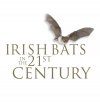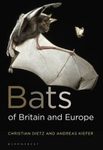Flora / Fauna Distribution Atlas
By: Niamh Roche(Author), Tina Aughney(Author), Ferdia Marnell(Author), Mathieu Lundy(Author), Heather Humphreys(Foreword By), Mark Durkan(Foreword By)
173 pages, colour photos, colour illustrations, colour distribution maps, colour tables
![Irish Bats in the 21st Century Irish Bats in the 21st Century]()
Click to have a closer look
About this book
Contents
Customer reviews
Related titles
About this book
Bats are the most diverse group of Irish terrestrial mammals, with nine confirmed resident species. This is the first book dedicated entirely to these elusive creatures, published by Bat Conservation Ireland, a charity dedicated to the conservation of Ireland's bats that was formed in 2004. Irish Bats in the 21st Century summarises the considerable body of bat research and surveillance that has been undertaken in Ireland in the 21st Century, much of it by citizen scientists.
Introductory chapters provide background to bat work in Ireland, as well as describing methods used for identifying and surveying for these protected species. These are followed by detailed species accounts that cover current population trends, distribution maps, roost selection, habitat types and available biometric data for Irish specimens.
The final chapter summarises the many conservation threats faced by Irish bats and places these in the context of available trend information. Irish Bats in the 21st Century is an authoritative guide and reference, illustrated with colour photographs, and it is essential reading for any enthusiast of Irish wildlife.
Contents
Ministerial Foreword 3
Preface 6
Acknowledgements 7
Chapter 1: Introduction 9
- Bat Identification 12
- A History of Bat Recording in Ireland 14
- BATLAS 2010 15
- Bat Monitoring 16
- Legislation, International Agreements and Threat Levels 19
- The Book and Future Recording 19
Chapter 2: Background to Data Used in Species Accounts 21
- Background Information 22
- Species Descriptions 22
- Records 25
- Roost Size and Roost Selection 32
- Seasonal Activity 32
- Core Ranges, Habitat Preferences and Roosting Habitats 33
- Population Trends 34
- Statistical Aanalysis of Trends 40
Chapter 3: Species Accounts 43
- Common Pipistrelle 44
- Soprano Pipistrelle 52
- Nathusius' Pipistrelle 60
- Distinguishing Between the Pipistrelles in Ireland 66
- Leisler's Bat 70
- Daubenton's Bat 77
- Natterer's Bat 84
- Whiskered Bat 91
- Brown Long-Eared Bat 98
- Lesser Horseshoe Bat 104
- Possible Vagrant: Brandt's Bat 112
- Possible Vagrant: Greater Horseshoe Bat 114
Chapter 4: Results: Monitoring Schemes, Distributions and Landscapes 117
- Annual Bat Population Trends in Ireland 118
- Bat Distributions 120
- Detector vs Roost Records 123
- Range Change 124
- Bat Diversity Across the Island 126
- Core Ranges and Landscape Suitability 128
Chapter 5: Discussion 131
- Irish Bat Populations – Threats 133
- Threats from an Increasing Human Population 134
- Threat of Habitat Destruction and Modification 137
- Threat of Roost Site Disturbance 147
- Health Issues 151
- Threat of Persecution 152
- Lack of Information 152
- Climate Change 153
- Current Bat Population Trends, Distributions and Threats in Context 154
Conclusions 155
References 157
Customer Reviews
Flora / Fauna Distribution Atlas
By: Niamh Roche(Author), Tina Aughney(Author), Ferdia Marnell(Author), Mathieu Lundy(Author), Heather Humphreys(Foreword By), Mark Durkan(Foreword By)
173 pages, colour photos, colour illustrations, colour distribution maps, colour tables
"Irish Bats in the 21st Century is not just a useful reference for those wanting to find out more about bats, it provides valuable information for the professional ecologist and those with a duty of care to protect bats and bat habitat [...] In summary this is a well written, attractive book that celebrates the hard work carried out by many individuals in Ireland and, with its emphasis on validated records and standardised data, it will no doubt provide a useful tool and baseline for continued surveying, researching and protecting Irish bats in years to come."
– from the CIEEM award booklet
"[...] an elegant, well illustrated and most accessible scientific review and species gallery [...]"
– Irish Times
"[...] so I had the chance to read your book from cover to cover and found it very interesting. I particularly like the fact that each of the accounts followed exactly the same format and so allowed a comparison of the status of the species and current knowledge of the species roosting ecology. Its actually a very useful baseline tool, as well as a good read and if we had the same here I'd use it regularly."
– H. Andrews, UK-based ecological consultant
"Enjoying my copy! Well written, beautifully laid out and lots of interesting info. Congratulations to everyone involved."
– C. Heardman, Co. Cork


































